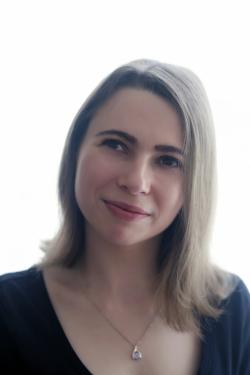
Picture this – exploring diversity in children’s publishing

Emily Booth, Research Assistant, IKM and Digital Studies Program
Profile page
Animals dominate Australian picture books.
From a banana-eating piranha to a greedy pug, a very cranky bear to an invisible possum, they offer a way for children to explore sometimes difficult emotions and ideas – from a safe distance.
But the dominance of zoological critters in publisher’s lists could also reflect a cultural blind spot, says UTS doctoral candidate and Social Impact Grant recipient, Emily Booth.
“Animals appear in Australian picture books at over four times the rate that people from diverse backgrounds do.”
It’s a disparity that can’t be explained by relatability alone, according to Emily, who – together with volunteer-run, not-for-profit Voices from the Intersection – collected and analysed data on picture books published in 2018 to explore diversity (or its lack) in Australian children’s literature.
“Characters who could not be identified as Indigenous, People of Colour, people with disability, or LGBT occur over three times as often as protagonists from marginalised communities.”
This finding is potentially important for all children, whatever the background, according to Emily.
“Picture books help you learn to read but also how to understand stories. They are a kind of template on how to be a child, how to exist,” she says.
“If they exclude people from diverse communities, then there are also kids potentially sitting there thinking no-one in this book looks like me, no-one in this book speaks like me, no-one has the same sort of life as me.”
It’s an alienating experience too many small children have, according to Emily.
“The underlying message is: you don’t belong on the page.”
For the project, Emily scrutinised the AustLit database, the National Library of Australia and other bibliographic services as well as other publicly-available content to determine not only the kind of titles making it to publication but also whether that content was written and/or illustrated by people from diverse communities.
Voices from the Intersection will use the collected data in their campaign to increase diversity in the children’s publishing industry, but ultimately Emily also hopes the data goes some way to ensuring that more high-quality books get published full stop.
“Increasing diversity is actually about making art more valuable, about making it more entertaining, more engaging,” she says.
“If you write a disabled character and you don’t have that experience yourself it’s less likely to be authentic. We avoid narrative clichés, clichés with metaphor, but we also need to be aware about clichés of identity – about avoiding stereotypes. Diversity and quality aren’t different things.”
*Emily Booth is not a spokesperson for Voices from the Intersection. Her comments reflect her personal interpretation of the project findings.
The Problem
Picture books feature in most Australian’s childhoods, but they can fail to reflect a range of identities and the different ways that people live in modern Australia.
The Response
Emily collected data on the number of picture books published in Australia in 2018 by and about people from diverse groups – including Aboriginal and Torres Strait Islanders, People of Colour, people with disability, and those who are LGBTIQA+. This data will be used by Voices from the Intersection to campaign to increase diversity within Australian publishing.
What helped accomplish this?
Emily was able to build on methodology she had already developed to research diversity in Australian young adult fiction. She was also able to work with two of her idols, authors Rebecca Lim and Dr Ambelin Kwaymullina, who run Voices from the Intersection.
What has changed as a result?
The project team now have hard numbers with which to support Voices from the Intersection in its mission to raise public and industry awareness about the lack of diversity in Australian children’s publishing.
Download full case study
